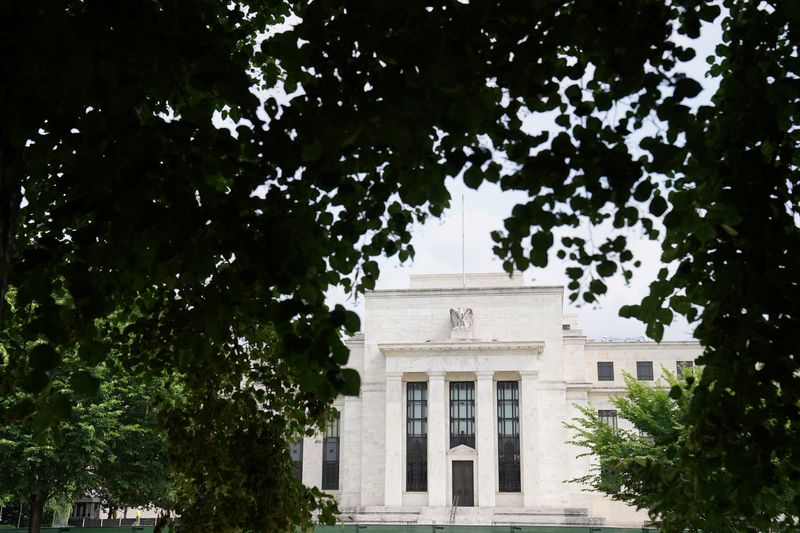Select Language

1. Fed decision in focus
The Fed will be in the spotlight this week, as markets are now all but certain that the central bank will slash interest rates at the end of its two-day gathering on Wednesday.
Underpinned by signs of a softening U.S. labor market, policymakers are widely anticipated to back the first rate cut since an easing cycle was paused in December. Bringing down rates can, in theory, help spur investment and hiring.
However, a reduction can risk pushing up inflationary pressures at the same time. Last week, a monthly U.S. consumer price index reading accelerated slightly thanks to an uptick in housing and food costs, a potential indication of sticky inflation.
Yet a separate measure showing a rise in weekly initial jobless claims likely kept a Fed rate cut on track. There is now a roughly 95% probability that borrowing costs are lowered by 25 basis points, as well as about a 5% chance of a deeper half-point drawdown, according to CME’s FedWatch Tool. The Fed’s target rate currently stands at a range of 4.25% to 4.5%.
"Inflation remains above target and tariffs are likely to keep it elevated in the near term, but the balance of risks are tilted towards the need for more support for the economy," analysts at ING said in a note.
2. Bank of Canada, Bank of England, Bank of Japan decisions ahead
Along with the Fed, interest rate decisions are due out from a slate of other central banks around the world.
The Bank of Canada is seen slashing rates by a quarter-point, in a bid to offer support to an economy that is especially exposed to U.S. President Donald Trump’s sweeping tariffs. The Canadian job market slowed for a second straight month in August, while the wider economy contracted sharply in the second quarter, although inflation has not strayed far from analysts’ expectations.
At the Bank of England, officials are anticipated to leave borrowing costs unchanged. The BoE, which will also have the chance to gauge jobs and inflation data prior to Thursday’s decision, previously slashed rates in August.
Analysts also project that the Bank of Japan will keep rates steady, although investors may be keeping an eye out for any hints around the policymakers’ plans for the fourth quarter against a backdrop of wider domestic political uncertainty.
3. U.S. retail sales
On the economic calendar, U.S. retail sales data for August is set to be released on Tuesday.
Economists are predicted that retail sales growth decelerated to 0.2% last month. In July, the figure came in at 0.5%, bolstered by solid demand for cars and promotional drives by e-commerce giant Amazon.com and big-box titan Walmart.
June’s sales numbers were revised higher as well, providing some hope that economic activity has been able to weather the wider labor market slowdown.
Still, the prospect of an easing jobs picture, coupled with indications of fading consumer confidence and heightened goods prices, are possible headwinds for sales heading into the final weeks of the third quarter.
4. FedEx to report
FedEx will be among the headliners on this week’s earnings agenda, with the U.S. shipping group viewed as a proxy for consumer spending.
Considered an economic bellwether because it has ties with just about every type of company around the world, FedEx’s numbers have often been closely monitored for indications of early business trends.
Trump’s aggressive trade policies have been in sharp focus in FedEx’s recent quarterly results, as the White House’s tariffs have contributed to wider economic uncertainty that has led many firms to rein in spending.
In June, FedEx offered a cautious outlook that was fueled by the levies. The company declined to unveil a full-year earnings or revenue outlook, with CEO Raj Subramaniam warning of a "volatile" global demand environment.
Memphis-based FedEx’s fiscal first-quarter forecast of adjusted profit per share of $3.40 to $4 fell short of analysts’ expectations as well.
5. U.S.-China talks
U.S. and China officials are set to meet again after reportedly made little progress in the first day of a fresh round discussions on Sunday.
Anticipation for the talks in Madrid has been subdued, particularly around a breakthrough on longstanding trade tensions between the world’s two largest economies.
Observers are instead expecting the negotiations to conclude with an extension to a deadline for short-form video app TikTok -- which is owned by China’s ByteDance -- to divest its U.S. operations. At the moment, if ByteDance does not sell the unit by September 17, TikTok faces a shutdown in the U.S.
Citing a source familiar with the matter, Reuters reported that President Donald Trump is likely to extend the deadline.
Bessent told reporters that both sides would "start again in the morning" after they met for just six hours on Sunday. Meanwhile, China’s embassy in Madrid informed reporters that a concluding news conference could take place on Monday, suggesting that the talks could wrap up soon. Bessent is set to head to London on Tuesday, prior to Trump’s state visit with King Charles later in the week.
Elsewhere, before the start of the negotiations in Spain, China’s Ministry of Commerce opened an anti-discrimination probe into U.S. policy over the trade of chips and a separate investigation into suspected dumping of U.S. analog chips.

